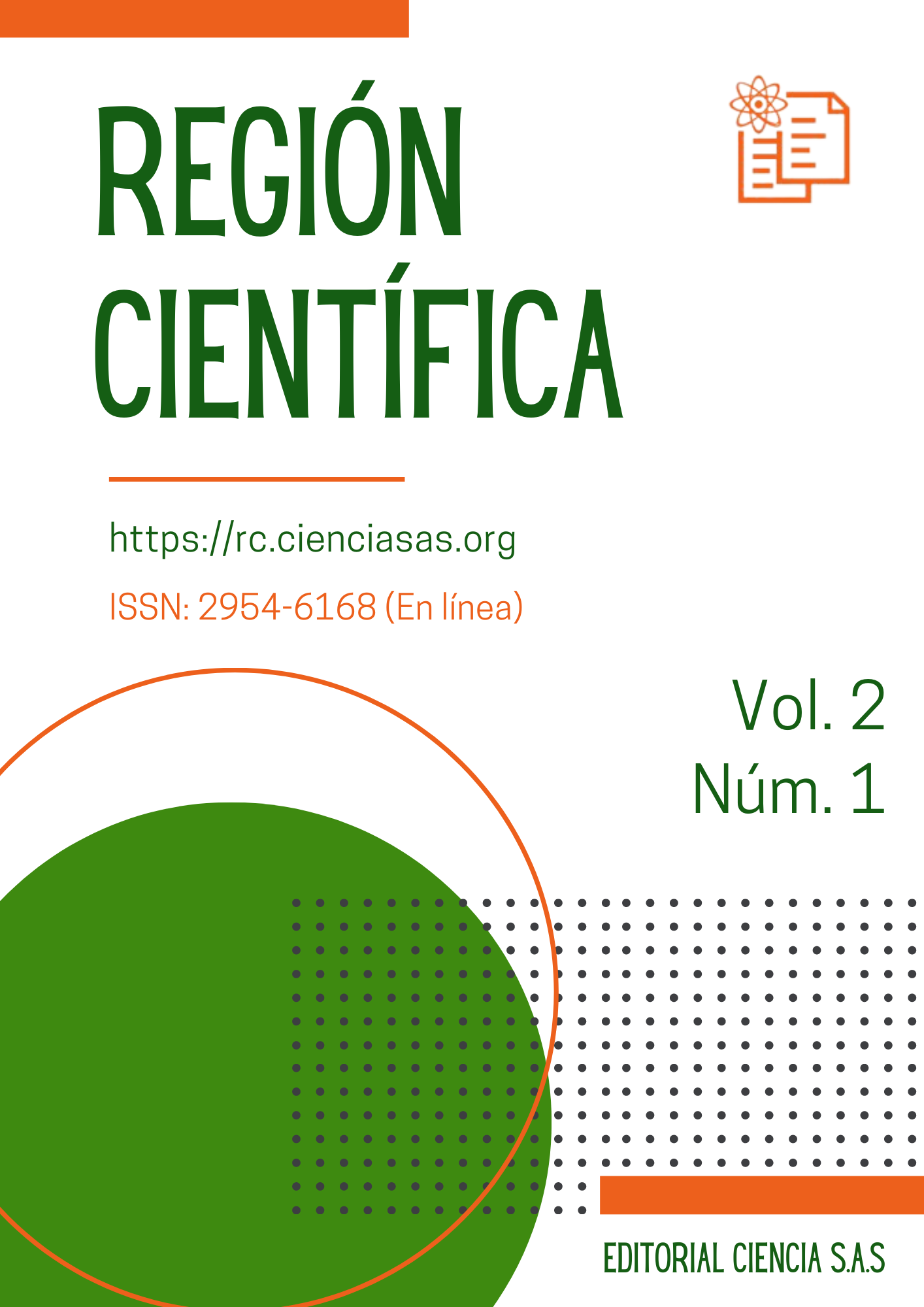Adicción a redes sociales en estudiantes de una universidad nacional de Junín (Perú)
DOI:
https://doi.org/10.58763/rc202353Palabras clave:
Internet, medios sociales, problemas sociales, psicología clínicaResumen
Las adicciones constituyen uno de los principales problemas sociosanitarios a nivel mundial. Su impacto biopsicosocial, su alta prevalencia y complejo tratamiento, así lo justifican. En el caso específico de la adicción a las redes sociales, esta puede ser un factor disruptor de la vida estudiantil y el desempeño académico. La investigación realizada tuvo como objetivo de determinar el nivel de adicción a redes sociales de los estudiantes de una Universidad Nacional de Junín. El estudio fue de alcance exploratorio descriptivo y de corte transeccional, mediante la aplicación de una encuesta a una muestra de 185 estudiantes. Los resultados evidenciaron que los niveles de adicción y de obsesión a redes sociales son altos, el nivel de falta de control personal también se apreció alto, mientras que el nivel de uso excesivo es medio. Además, el estudio sugirió la existencia de una relación positiva entre obsesión y adicción, así como entre la falta de control personal percibido y la adicción. Los resultados obtenidos indicaron la necesidad de seguir profundizando en la problemática, así como el diseño y ejecución de programas para la prevención y tratamiento de la adicción a redes sociales.
Métricas
Citas
Ansari, J. y Khan, N. (2020). Exploring the role of social media in collaborative learning the new domain of learning. Smart Learning Environments, 7(1). 1-16. https://doi.org/10.1186/s40561-020-00118-7
Aparicio-Martínez, P., Ruiz-Rubio, M., Perea-Moreno, A., Martínez-Jiménez, M., Pagliari, C., Redel-Macías, M. y Vaquero-Abellán, M. (2020). Gender differences in the addiction to social networks in the Southern Spanish university students. Telematics and Informatics, 46, 101304. https://doi.org/10.1016/j.tele.2019.101304
Balcerowska, J., Bereznowski, P., Biernatowska, A., Atroszko, P., Pallesen, S. y Andreassen, C. (2022). Is it meaningful to distinguish between Facebook addiction and social networking sites addiction? Psychometric analysis of Facebook addiction and social networking sites addiction scales. Current Psychology, 41, 949–962. https://doi.org/10.1007/s12144-020-00625-3
Capriotti, P., Zeler, I. y Camilleri, M. (2021). Corporate Communication Through Social Networks: The Identification of the Key Dimensions for Dialogic Communication. In M. Camilleri (Ed.), Strategic Corporate Communication in the Digital Age (pp. 33-51). Esmerald. https://doi.org/10.1108/9781800712645
Hernández, R. y Mendoza, C. (2018). Metodología de la Investigación: Las rutas cuantitativa, cualitativa y mixta (1ra ed.). McGraw-Hill Interamericana.
Hortigüela-Alcalá, D., Sánchez-Santamaría, J., Pérez-Pueyo, Á. y Abella-García, V. (2019). Social networks to promote motivation and learning in higher education from the students’ perspective. Innovations in Education and Teaching International, 56(4), 412-422. https://doi.org/10.1080/14703297.2019.1579665
Hussain, Z. y Griffiths, M. (2021). The Associations between Problematic Social Networking Site Use and Sleep Quality, Attention-Deficit Hyperactivity Disorder, Depression, Anxiety and Stress. International Journal of Mental Health and Addiction, 19, 686–700. https://doi.org/10.1007/s11469-019-00175-1
Johnson, R. y Christensen, L. (2019). Educational research: Quantitative, qualitative, and mixed approaches. Sage Publications.
Karakose, T., Yirci, R. y Papadakis, S. (2022). Examining the Associations between COVID-19-Related Psychological Distress, Social Media Addiction, COVID-19-Related Burnout, and Depression among School Principals and Teachers through Structural Equation Modeling. International Journal of Environmental Research and Public Health, 19(4), 1951. https://doi.org/10.3390/ijerph19041951
Kemp, S. (2020). Digital 2021: Global Overview Report. DataReportal. https://datareportal.com/reports/digital-2021-global-overview-report
Khan, A., Moin, M., Khan, N. y Zhang, C. (2022). A multistudy analysis of abusive supervision and social network service addiction on employee's job engagement and innovative work behaviour. Creativity and innovation managment, 31(1), 77-92. https://doi.org/10.1111/caim.12481
Lee, J. (2022). The effects of social comparison orientation on psychological well-being in social networking sites: Serial mediation of perceived social support and self-esteem. Current Psychology, 41, 6247–6259. https://doi.org/10.1007/s12144-020-01114-3
Lin, S., Liu, D., Niu, G., y Longobardi, C. (2022). Active Social Network Sites Use and Loneliness: the Mediating Role of Social Support and Self-Esteem. Current Psychology, 41, 1279–1286. https://doi.org/10.1007/s12144-020-00658-8
Manca, S. (2020). Snapping, pinning, liking or texting: Investigating social media in higher education beyond Facebook. The Internet and Higher Education, 44, 100707. https://doi.org/10.1016/j.iheduc.2019.100707
Morewedge, C., Monga, A., Palmatier, R., Shu, S., y Small, D. (2021). Evolution of Consumption: A Psychological. Journal of Marketing, 85(1), 196-218. https://doi.org/10.1177/0022242920957007
Petry, N., Zajac, K. y Ginley, M. (2018). Behavioral Addictions as Mental Disorders: To Be or Not To Be? Annual Review of Clinical Psychology, 14, 399-423. https://doi.org/10.1146/annurev-clinpsy-032816-045120
Ross, B., Pilz, L., Cabrera, B., Brachten, F., Neubaum, G. y Stieglitz, S. (2019). Are social bots a real threat? An agent-based model of the spiral of silence to analyse the impact of manipulative actors in social networks. European Journal of Information Systems, 28(4), 394-412. https://doi.org/10.1080/0960085X.2018.1560920
Salas-Blas, E., Merino-Soto, C., Pérez-Amezcua, B. y Toledano-Toledano, F. (2022). Social Networks Addiction (SNA-6) – Short: Validity of Measurement in Mexican Youths. Frontiers in Psychology, 12, 774847. https://doi.org/10.3389/fpsyg.2021.774847
Stockdale, L. y Coyne, S. (2020). Bored and online: Reasons for using social media, problematic social networking site use, and behavioral outcomes across the transition from adolescence to emerging adulthood. Journal of Adolescence, 79, 73-183. https://doi.org/10.1016/j.adolescence.2020.01.010
Sun, Y. y Zhang, Y. (2021). A review of theories and models applied in studies of social media addiction and implications for future research. Addictive Behaviors, 114, 106699. https://doi.org/10.1016/j.addbeh.2020.106699
Tarafda, M., Maier, C., Laumer, S. y Weitzel, T. (2020). Explaining the link between technostress and technology addiction for social networking sites: A study of distraction as a coping behavior. Information Systems Journal, 30(1), 96-124. https://doi.org/10.1111/isj.12253
Vaghefi, I., Qahri-Saremi, H., y Turel, O. (2020). Dealing with social networking site addiction: a cognitive-affective model of discontinuance decisions. Internet Research, 30(5), 1427-1453. https://doi.org/10.1108/INTR-10-2019-0418
Van Den Beemt, A., Thurling, M. y Willems, M. (2020). Towards an understanding of social media use in the classroom: a literature review. Technology, Pedagogy and Education, 29(1), 35-55. https://doi.org/10.1080/1475939X.2019.1695657
Yin, L., Wang, P., Nie, J., Guo, J., Feng, J., y Lei, L. (2021). Social networking sites addiction and FoMO: The mediating role of envy and the moderating role of need to belong. Current Psychology, 40, 3879–3887. https://doi.org/10.1007/s12144-019-00344-4
Zollo, L., Filieri, R., Rialti, R. y Yoon, S. (2020). Unpacking the relationship between social media marketing and brand equity: The mediating role of consumers’ benefits and experience. Journal of Business Research, 117, 256-267. https://doi.org/10.1016/j.jbusres.2020.05.001
Descargas
Publicado
Cómo citar
Número
Sección
Licencia
Derechos de autor 2023 Anita Maribel Valladolid Benavides, Fabián Israel Neyra Cornejo, Orlando Hernández Hernández, Paulo César Callupe Cueva, Julián Palomino Akintui Antich

Esta obra está bajo una licencia internacional Creative Commons Atribución-NoComercial-CompartirIgual 4.0.
Este artículo se distribuye bajo la licencia Creative CommonsReconocimiento-NoComercial-CompartirIgual 4.0 Internacional. A menos que se indique lo contrario, el material publicado asociado se distribuye bajo la misma licencia.












